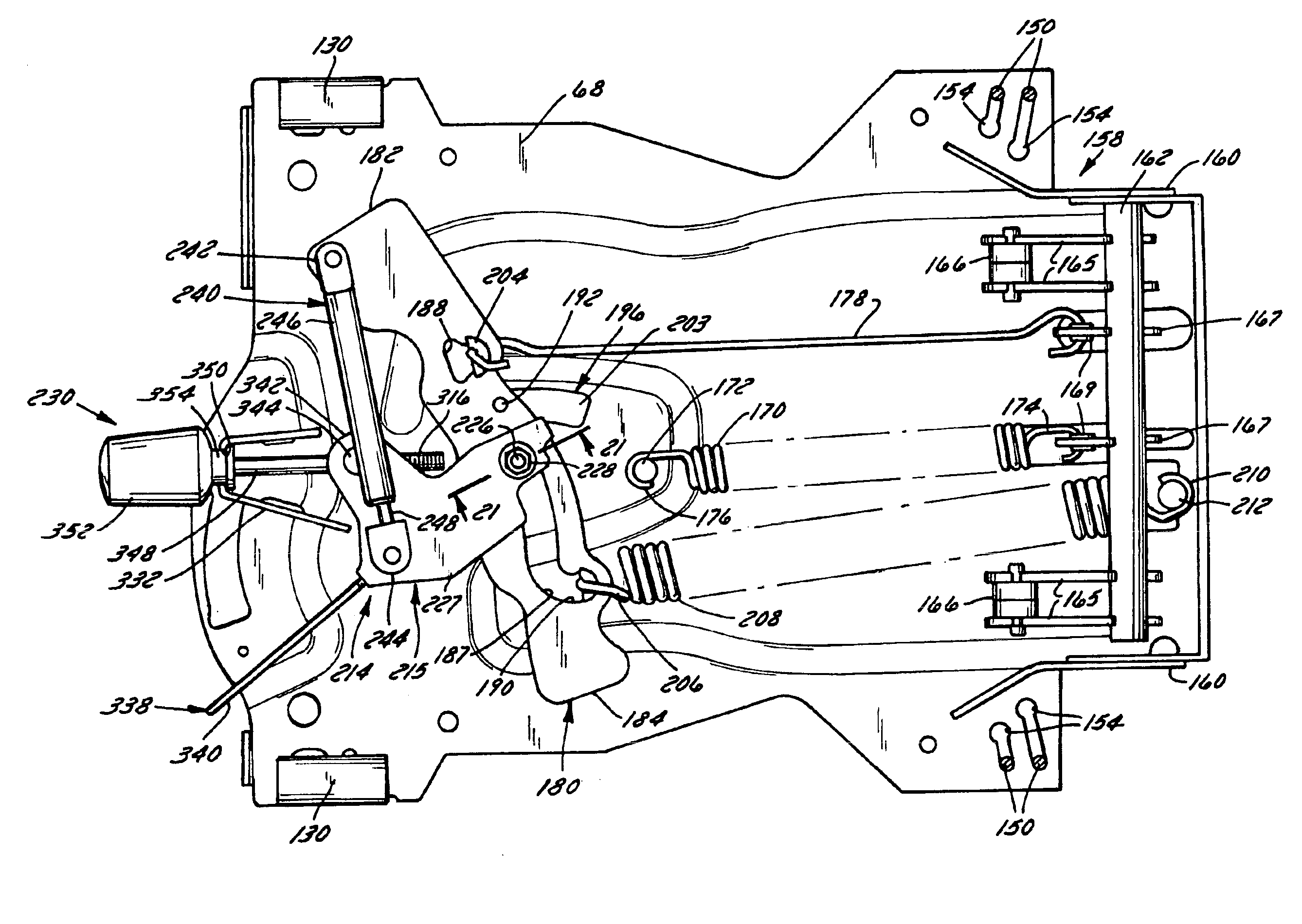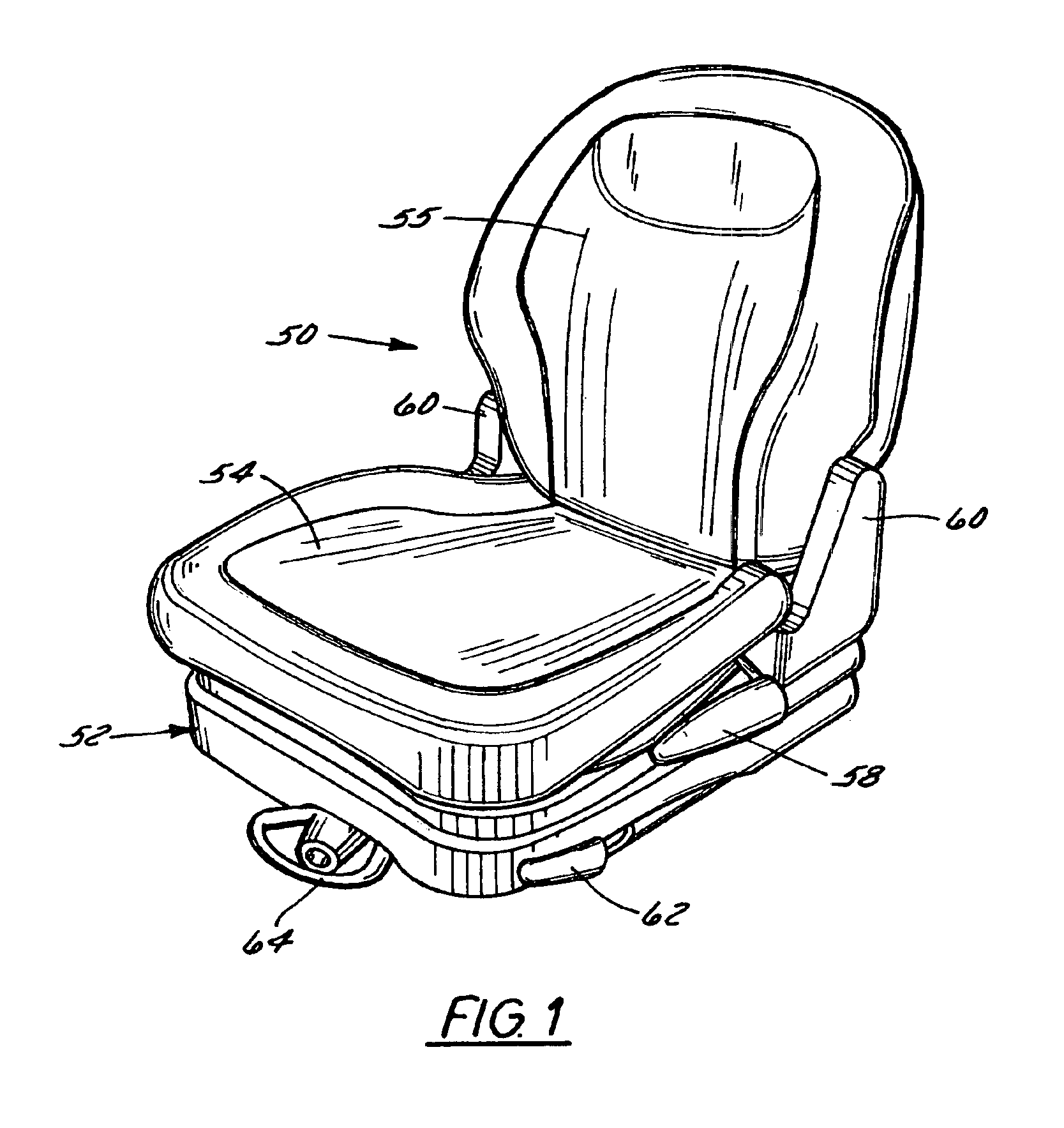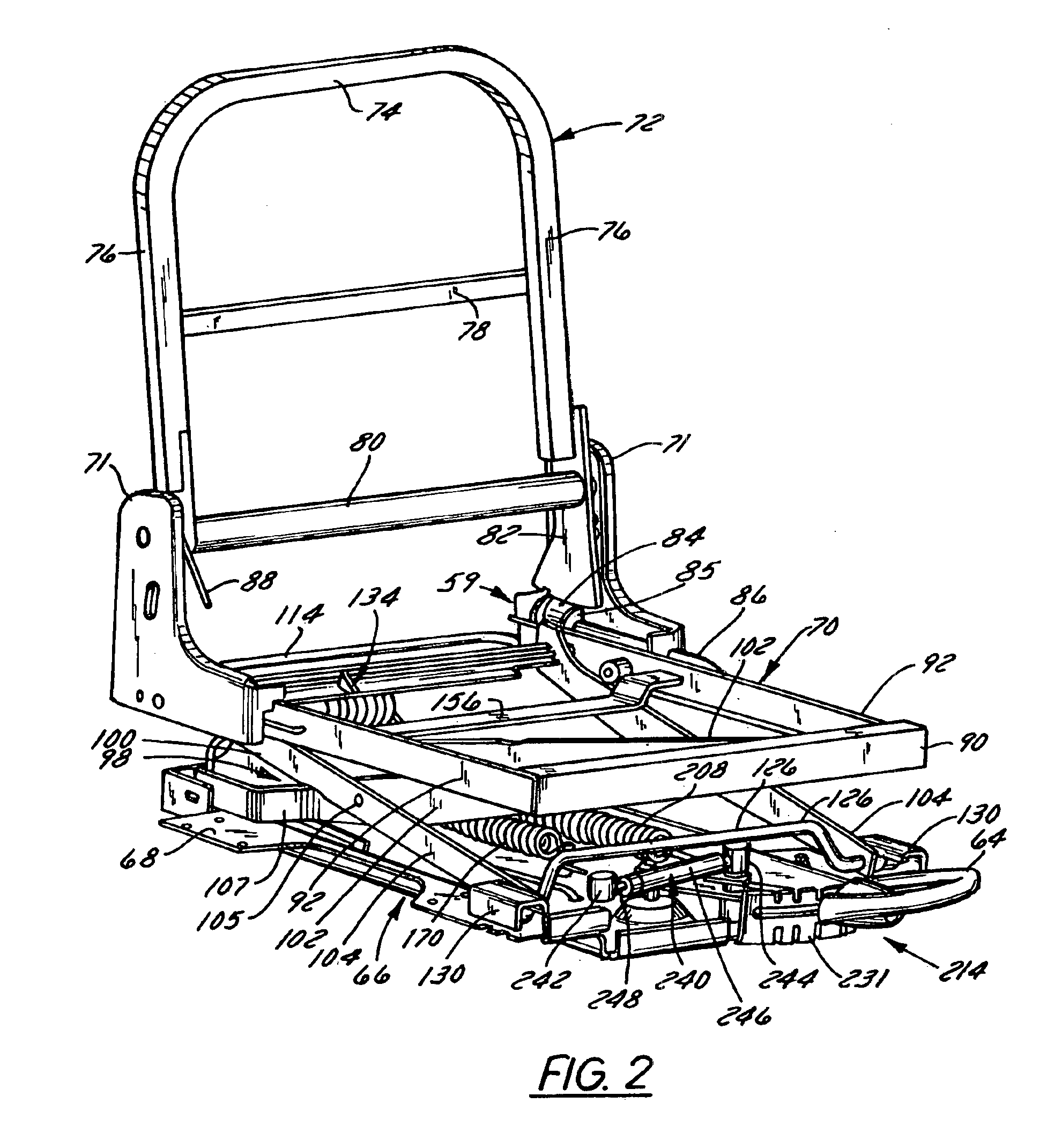Seat suspension
- Summary
- Abstract
- Description
- Claims
- Application Information
AI Technical Summary
Benefits of technology
Problems solved by technology
Method used
Image
Examples
first embodiment
[0065]The second ends 124 each include an arcuate slot 132 extending therethrough that is adapted to receive and engage one end of a crossbeam 134. The crossbeam 134 is generally arcuate in cross-section and includes an upper lip 136 that is fixedly connected to each of the second ends 124 of the outer arms 104 in any conventional manner, such as by welding, and a lower lip 138 that extends between the outer arms 104. In a first embodiment, each end of the crossbeam 134 that extends through the arcuate slots 132 forms a receiver cup 140 which rotatably supports a shaft 142, as best shown in FIGS. 3-7. Opposite the cup 140, each shaft 142 is fixedly connected to the bracket 71 and side member 92 such that each shaft 142 forms a part of the seat frame 70. The engagement of the shaft 142 within the receiver cup 140 enables the cup 140 and the second end 124 of each outer arm 104 to move or pivot with respect to the shaft 142 and frame rail 70 when the frame rail 70 is depressed, conseq...
second embodiment
[0069]In the bellcrank 158 shown in FIGS. 15-19, the pivot rod 162 still extends between the supports 160, but instead of a single pair of roller supports 164, the rod 162 is connected to two spaced pairs of roller support arms 165 and a pair of pull arms 167 disposed between the pairs of roller support arms 165. Each pair of roller support arms 165 supports a roller 166 therebetween which is positioned directly beneath and in engagement with the lower lip 138 of the crossbeam 134. The pull arms 167 extend outwardly from the pivot rod 162 at an angle with regard to the supports arms 165, preferably less than ninety (90) degrees, with one pull arm 167 engaging the hook 174 on the first spring 170 and the other pull arm 167 engaging one end of the transfer rod 178. The pull arms 167 can include low-friction bearings 169 disposed between the arms 167 and the hook 174 and transfer rod 178, respectively, in order to enhance the ease of movement of the arms 167, hook 174 and rod 178 with ...
PUM
 Login to View More
Login to View More Abstract
Description
Claims
Application Information
 Login to View More
Login to View More - R&D
- Intellectual Property
- Life Sciences
- Materials
- Tech Scout
- Unparalleled Data Quality
- Higher Quality Content
- 60% Fewer Hallucinations
Browse by: Latest US Patents, China's latest patents, Technical Efficacy Thesaurus, Application Domain, Technology Topic, Popular Technical Reports.
© 2025 PatSnap. All rights reserved.Legal|Privacy policy|Modern Slavery Act Transparency Statement|Sitemap|About US| Contact US: help@patsnap.com



